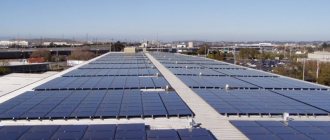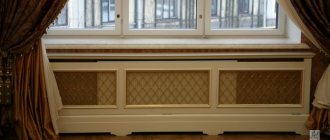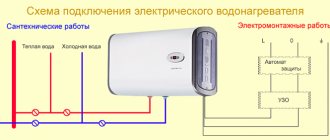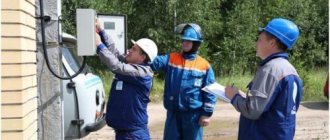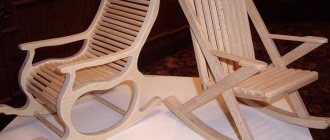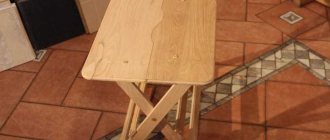Do you want to save on electricity or have an additional and independent source of alternative energy? Or maybe you are a supporter of green energy? If so, then solar panels are the topic for you.
- Solar energy, or what solar panels are
- Solar panels - from the history of creation
- What is the difference between solar panels and solar collectors?
- The principle of operation of solar panels
- Types of photocell plates
- Efficiency of solar panels
- What affects the energy efficiency of solar panels?
- Advantages and disadvantages of solar panels
- Where are solar panels used?
Solar energy, or what solar panels are
The sun is the main source of energy for all living things and our planet itself. Moreover, the amount of energy reaching the Earth in just 40 minutes is enough to satisfy the energy needs of all the inhabitants of the globe for a year. Considering the renewable and practically limitless resources of the celestial body, the prospects for its use are great. Moreover, of all alternative energy sources, solar is recognized as the safest and most environmentally friendly. Therefore, today solar energy is becoming increasingly in demand in various spheres of human activity.
Special devices help people take advantage of this gift of nature - solar panels (or solar batteries) . They convert free energy from the sun into electricity and are becoming increasingly popular around the world.
Review of manufacturers
The top sellers are products from Chinese brands. This is due to their availability. For comparison, the price of Chinese solar panels is 2 times lower than German ones with similar characteristics. Popular brands:
- Suntech Power Co.;
- Yingli Green Energy;
- HiminSolar.
Domestic brand panels are also common:
- "Sun Shines" (LLC "Autonomous Lighting Systems");
- Hevel LLC;
- OJSC "Ryazan Metal-Ceramic Devices Plant";
- "Telecom-STV";
- CJSC Termotron-zavod, etc.
Solar panels - from the history of creation
The idea of converting free sunlight into energy that will work for the benefit of people has excited people for a long time. It so happened that the first solution historically was solar thermal power plants or solar collectors , which are fundamentally different from solar batteries (we will briefly discuss the principle of operation of collectors below). Solar panels have become, in fact, the second and quite successful attempt by mankind to convert the energy of the sun into another type of energy that can be used to supply power to various kinds of residential, non-residential and commercial facilities.
And although solar energy is not many years old, its development was preceded by a number of discoveries and developments. But a real breakthrough in the use of light energy occurred in the mid-19th century, when the French scientist Alexandre Edmond Becquerel discovered the phenomenon of the photoelectric effect. In 1873, the English electrical engineer Willoughby Smith discovered the effect of photoconductivity in selenium, and a few years later the American Charles Fritts designed the first solar cell, consisting of a thin layer of selenium located between plates of gold and copper, and had an efficiency of only 1%.
In 1987, Heinrich Hertz discovered the external photoelectric effect, and in 1889, the Russian Alexander Stoletov, in whose experimental setup an electric current generated by light rays flowed, described the laws of the photoelectric effect. Later, Albert Einstein also had a hand in this. At the beginning of the 20th century, he explained the photoelectric effect based on quantum theory, for which he later even received the Nobel Prize. And the first prototypes of solar panels were created by the Italian photochemist Giacomo Luigi Chamichan. Subsequently, scientific research in the field of semiconductors led to the synthesis of silicon solar cells with an efficiency of 4%. This innovation was made in 1954 in a laboratory. Later, their efficiency was increased to 15%, and solar panels were first used in rural areas and remote towns as a power source for telephone systems, where they were used successfully for many years. A few years later, satellites using solar panels were launched into space. Subsequently, photocells based on other semiconductors were developed and created.
TOP 7: ASE “Sanforce 780”
An autonomous system for supplying energy to dachas and country cottages uses solar energy. It allows the smooth operation of devices without which modern people cannot imagine a comfortable existence.
Equipment set
- Module FSM-260P – 3 pieces;
- Inverter with controller – 1 pc.;
- MC4 connector – 1 set.
The last two elements of the power plant are equipped with a built-in LED display that is backlit and allows the current and voltage at the circuit input from the solar modules to be visually assessed, as well as the voltage with the battery charging current and the state of charge of the latter.
We recommend:
- Portable phone chargers, advantages, features, price: TOP-7
- Heat accumulators for heating: types, features, price - TOP 10
An inverter is necessary to convert the DC battery voltage of 24V into a sinusoidal alternating voltage of 220V (frequency 50 Hz), which is necessary for the operation of devices necessary for a smooth life:
- laptops and DVD players;
- PC and pumps;
- Televisions and lighting devices:
- Chargers and other household appliances with a power of up to 1600 Watts.
Technical indicators
- Rated voltage – 24 V;
- Rated inverter power - 1600 W;
- Installed power – 789 W;
- Battery capacity -144 Ah.
Advantages
- ASE are sold in working condition, i.e. they are ready for installation.
- Short time for commissioning and connection.
Price
You can buy a solar power plant at a price of 95 thousand rubles in online stores:
| Where can I buy | Price in rubles |
| https://moskva.tiu.ru/p320981592-solnechnaya-elektrostantsiya-ase;all.html | 95600 |
| https://evroelektro.tiu.ru/p320981592-solnechnaya-elektrostantsiya-ase.html | 95600 |
| https://kamyshlov.alfamart24.ru/shop/ase-sanfors-780 | 95600 |
| https://www.evroelektronn.ru/goods/79735713-solnechnaya_energosistema_ase_sanfors_780 | 95600 |
| https://s-ways.ru/?utm_source=google&utm_medium=cpc&utm_campaign=1343227884&network=g&placement=&adposition=1o3&utm_term=%2B%D1%81%D0%BE%D0%BB%D0%BD%D0%B5%D1% 87%D0%BD%D1%8B%D0%B5%20%2B%D0%B1%D0%B0%D1%82%D0%B0%D1%80%D0%B5%D0%B8%20%D0% BA%D1%83%D0%BF%D0%B8%D1%82%D1%8C%20%D0%B2%20%2B%D0%BC%D0%BE%D1%81%D0%BA%D0% B2%D0%B5 | clarify |
What is the difference between solar panels and solar collectors?
As we already wrote above, humanity invented solar collectors earlier than solar panels. These are completely different devices, although both convert the energy of the Sun and have the word “solar” in their names. This is probably where their commonality ends. Now let's look at the differences.
In short, when using solar collectors, the consumer “at the output” receives thermal energy in the form of a heated coolant, and solar panels are intended only to generate electric current.
Solar panels on the roof
Solar panels directly convert the sun's energy into electricity using photovoltaic cells (PVCs - photovoltaic converters or solar cells).
A solar collector is a solar installation whose task is to collect and transmit thermal radiation to the coolant that circulates through the collector. In turn, the coolant heats the container where the water is located to provide hot water supply. That is, unlike solar panels, the solar collector heats the coolant material, and then the accumulated energy is used for certain purposes (water heating, heating system operation, flushing work). Simply put, solar collectors produce hot water.
Vacuum collectors - solar water heating system on the red roof of a house.
Video description
This video shows one of the few places where people are involved in the production of solar panels - a control check:
Customer support
provides support to users at all stages of cooperation - from preliminary consultations and assistance in selecting the optimal equipment configuration, to technical support during the entire period of use of the purchased equipment.
Wide geography of work
The equipment can be delivered almost anywhere in the Russian Federation. We also work with foreign clients - if delivery by transport companies is possible. Any issue can always be resolved individually.
If necessary, the company’s specialists travel to install equipment in many regions of the Russian Federation. The list of cities where you can order equipment installation work is listed on the website, and you can also check it with a consultant.
Choose a convenient way to contact support Source al-energy.ru
The principle of operation of solar panels
The principle of operation of solar panels
Solar panels are designed to convert the sun's energy into electrical energy. They are also called solar panels or solar modules. A solar panel is a device consisting of photocells that convert one type of energy into another. Photocells are semiconductor wafers that directly convert solar radiation into electrical current. Photocells are connected to each other in parallel or serial electrical circuits, which together work as a single source of electric current.
Solar cells are made from a variety of elements, but the most common are silicon-based solar cells. They are produced on an industrial scale. Less commonly used are cadmium, tellurium, copper selenides, and amorphous silicon. An even smaller percentage - about 10% - is made up of thin-film solar cells (for example, CdTe).
If we talk about silicon solar cells, then each of the elements is a thin plate consisting of two layers of silicon with its own physical properties, which are connected to each other. Since we are talking about semiconductors, the layers must have different permeability so that free electrons can easily pass from one layer to another. After all, a semiconductor is a material whose atoms either lack electrons (p-type) or have extra electrons (n-type). Typically, the top layer is negative (n-layer), which serves as the cathode, and the bottom layer is positive (p-layer), which serves as the anode. Excess electrons from the n-layer can leave their atoms, while the p-layer captures these electrons. It is the sun's rays that act as a catalyst for such a reaction - they “knock out” electrons from the atoms of the n-layer, and then they fly to occupy empty spaces in the p-layer. That is, when particles of light (photons) hit a photocell, a gate photoelectromotive force is formed due to the inhomogeneity of the crystal between the layers of the semiconductor.
As a result, a potential difference and a current of electrons arise, which move in a closed circle, leaving the p-layer, passing through an external load (in this case, a battery) and returning to the n-layer. Thus, the operating principle of a solar panel resembles a kind of wheel, along which electrons “run” instead of squirrels. At the same time, the battery is gradually charged.
The top layer of the photocell plate, which faces the Sun, is made of silicon, but with the addition of phosphorus. It becomes the source of excess electrons in the pn junction system.
Briefly about the main thing
Solar batteries are a set of equipment consisting of panels, an inverter, a battery (not always), a controller, and other “electric small things” for connection and fastening.
Experience shows that modern solar panels are expensive to use in the private sector as the main source of electricity for high-power heating devices. But at the same time, there are ample opportunities for their use to save energy, work as an autonomous source for powering low-power devices and a backup power source in case of failure of the main network.
If you compare solar panels and a generator with an internal combustion engine, then you will have to choose the latter only if the area on which you can place the equipment is critical for you. In all other respects, solar panels win at least twice as much.
Solar batteries are extremely reliable devices that can last at least 25 years. The weak point of the system is the batteries, but they will last for about 10-12 years of operation, which is at least twice the payback period of the equipment.
To order equipment or detailed consultation, we recommend contacting. This is one of the leaders in the domestic market, with its own production, which allows us to maintain high quality products, competitive prices, plus provide customers with support at all stages of cooperation.
Additionally
The exhibition of houses “Low-Rise Country” expresses sincere gratitude to the specialists for their assistance in creating the material.
– a full range of services for the design and installation of solar panels and the sale of related components.
Website: al-energy.ru
Email:
Tel: 8 800 201-78-12 – toll-free within the Russian Federation
2
+7 917 29 088 49
2
Ratings 0
Read later
Types of photocell plates
Types of photocell plates
According to manufacturing technology, FEP silicon wafers come in two types: monocrystalline and polycrystalline. Monocrystalline ones are made in the form of a square with beveled corners, polycrystalline ones are even squares. But the shape is not their main difference.
Monocrystalline solar cells are made from an artificially grown solid silicon crystal. And polycrystalline ones are obtained by a fairly simple and inexpensive method of gradual cooling of molten silicon.
Therefore, monocrystalline solar cells have a homogeneous structure and a higher efficiency factor (efficiency). However, their production cost is higher; they are more expensive than polycrystalline wafers.
The disadvantage of polycrystalline wafers is their low productivity - no more than 15%. This is due to their lack of purity and internal structure. The efficiency of a monocrystalline photocell already reaches 20-25%.
Polycrystalline silicon cells
Polycrystalline silicon cells
In polycrystalline batteries, the cell includes many crystals with randomly oriented optical axes. Their production does not require highly purified raw materials - secondary sources (in particular, recycled silicon batteries) and waste from metallurgical production can be used.
As a result, manufacturing costs are significantly reduced. However, this also reduces the conversion efficiency - the best samples demonstrate an efficiency of 15-18%.
Expert opinion
Grebnev Vadim Savelievich
Heating system installer
Such indicators have made it possible to squeeze out monocrystalline panels on the market. Currently, polycrystalline batteries account for more than 53% of silicon battery sales, versus just over 30% for monocrystalline batteries.
Externally, polycrystalline plates are regular-shaped rectangular plates of a rich blue color. The cost of generating “blue” panels is about 0.7-0.9: per 1 W. However, they show significantly less reduction in diffuse lighting and light incidence at angles other than 90 degrees.
Efficiency of solar panels
Standard silicon solar cells are single-junction, that is, the flow of electrons occurs only through one pn junction, the zone of which is limited in photon energy. This means that each individual solar cell can produce electricity only from rays of a certain narrow spectrum. The rest of the light energy is wasted. This is the main reason for the not very high efficiency of photocells.
Today they are trying to increase the efficiency of solar panels in different ways. For example, one of the solutions is cascade (multijunction) silicon elements. Each of these solar cells has several transitions and is designed for a specific spectrum of sunlight. In total, the efficiency of converting light rays into electric current increases, and with it the performance of the panel as a whole. However, the price of such elements is higher than single-junction ones. Therefore, in each specific case, the consumer must solve the dilemma of what is more important to him - price or energy efficiency.
Typically, the number of photocells in one solar panel is a multiple of 12, and the rated power of one such device ranges from 30 to 350 W. Amorphous, organic and photochemical solar cells have the lowest efficiency, from 5% to 10%. Such a panel with an area of 1 m2 will generate from 25 to 50 W/h of electricity. The efficiency of the most common silicon solar cells today is 17–25%. This means that up to 125 W/h is generated per 1 m2 of panel area. In general, developers around the world today are working to increase efficiency to 30%, and such solutions already exist. For example, solar panels based on gallium arsenide. They are the ones that can compete with silicon panels, and with an area of 1 m2, such a panel will provide electricity in the amount of 150 W/h.
Results: are there prospects for the development of an alternative energy source?
Today, many countries are developing various projects: connecting panels in outer space, installing road surfaces. By the way, a bicycle path has already been created and is operating, which produces 9,800 kW/h per year. Such a project was implemented in Holland. Its effectiveness has already been confirmed in practice. To prevent damage to the battery, a 1 cm thick (transparent) coating is provided. In addition, the developers plan to create an alternative power source of small dimensions, characterized by high performance.
What affects the energy efficiency of solar panels?
Energy efficiency is an important indicator of solar panels. For example, one photocell (one plate) is capable of producing energy in sunny weather, which will only be enough to charge a flashlight. Therefore, when it comes to larger scales of electricity generation, PV cells are usually combined in circuits (parallel connection to increase voltage, series connection to increase current). Their number and structure largely determine the energy efficiency of the panels. In addition, the energy efficiency of solar panels is influenced by the following factors:
- luminous flux power;
- angle of incidence of sunlight;
- correct selection of load resistance;
- temperature of the ambient air and the panel itself;
- absence or presence of anti-reflective coating of elements.
For example, the solar cell and the panel itself gradually heat up during operation. That part of the energy that was not used to produce electric current is transformed into heat. Therefore, the temperature on the panel surface can often reach values of more than 50Cº. However, the higher the surface temperature, the worse the photocell performs. This means that the same panel works differently in different weather: less efficiently in the heat, and more efficiently in the cold, and shows maximum efficiency on a sunny frosty day.
TOP-6: FSM 50 W poly
Description
To manufacture the premium class power plant module, solar cells use only certified high-efficiency polycrystalline cells belonging to quality category 1. This means high system reliability and decent performance.
Options
- Brand – Sunways;
- Solar cells are polycrystalline type;
- Power and voltage – 50 W and 12V (nominal);
- Current and voltage – 2.78A and 18V (at peak power);
- Short circuit current – 3.06A;
- Operating range – from minus 40 degrees to plus 85;
- Number of elements and their size – 156x46 and 36 pcs.;
- Distribution box – IP 65;
- MC4 connectors;
- Cable cross-section and length – 4 mm square. and 90 cm.
Buy
| Where to buy in Russia | price |
| https://moskva.tiu.ru/p338615512-solnechnyj-modul-fsm;all.html?_openstat=tiu_prosale%3B%D1%81%D0%BE%D0%BB%D0%BD%D0%B5%D1% 87%D0%BD%D1%8B%D0%B5+%D1%8D%D0%BB%D0%B5%D0%BA%D1%82%D1%80%D0%BE%D1%81%D1%82% D0%B0%D0%BD%D1%86%D0%B8%D0%B8%3B%D0%A1%D0%BE%D0%BB%D0%BD%D0%B5%D1%87%D0%BD% D1%8B%D0%B9+%D0%BC%D0%BE%D0%B4%D1%83%D0%BB%D1%8C+%D0%A4%D0%A1%D0%9C+50+%D0%92 %D1%82+%D0%BF%D0%BE%D0%BB%D0%B8%3Bcatalog | 3500 |
| https://eco50.ru/solnechnye-sistemy/solnechnye-batarei/41/ | 3861 |
| https://invertory.ru/product/solnechnaja-panel-exmork-50-watt-12v-/ | 3007 |
| https://shop.solarhome.ru/50-vt-fsm-50p-12v-poli-sunways-solnechnye-paneli.html | 4588 |
| https://www.akvazoo.ru/2005012—Solnechnaya-panel-EXMORK-FSM-50P-50-watt-12V-Poli_2005012t.html | 3100 |
Advantages and disadvantages of solar panels
Like any device, solar panels have their advantages and disadvantages.
Advantages of solar panels
- Inexhaustibility, renewability and universal availability of an energy source, which is important especially in conditions of depletion of other types of natural fuel (oil, gas, coal).
- Environmental friendliness. Solar power plants are truly one of the most environmentally friendly forms of electricity generation. During operation, they do not emit harmful impurities into the air and operate silently compared to wind turbines. The only thing you can complain about, as with electric cars, is that in the production of the panels themselves, batteries, power plants and various conductors, toxic substances are used that pollute the environment.
- Cost-effective – solar panels make it possible to save electricity and, accordingly, money. After all, solar rays are used to generate electricity, which are absolutely free.
- Wear resistance and long service life. The warranty period is usually 25–30 years, but the photovoltaic power plant will not cease to operate even after this period. Wear occurs very slowly, especially if there are no moving parts.
- Simultaneous processing of solar energy into electrical energy.
- Energy generation not only in sunny, but also in cloudy weather.
- Possibility of autonomization of the facility’s energy supply system and independence from centralized power supply.
- Simplicity, stability, reliability of the design and its installation.
- You can expand the structure if there is a need to increase the power of the system; this is easy to do thanks to the modularity of solar panels.
Disadvantages of solar panels
- High cost and long payback period (up to 10 years).
- Low efficiency.
- Low energy efficiency in cloudy weather and at night.
- Uneven electricity production, which depends on light and weather. This can be compensated for by connecting the system to the network - then during the day it will be possible to sell excess electricity to the electricity company, and at night use the centralized power supply.
- Big sizes. The panels take up a lot of space - their installation requires significant areas. They can occupy, for example, the entire roof and walls of a building.
- Difficult to use in regions with high precipitation, especially snow.
- The need to install additional devices to generate alternating current (solar panels produce only direct current) and to store energy (because electricity is only generated during daylight hours).
Cost of the kit, overview of technical characteristics
Solar battery kit
The price of the device is determined taking into account the components:
- module;
- accumulator battery;
- controller;
- inverter;
- cable;
- terminals;
- rack.
The price of solar panels varies. Depending on the components, the cost varies within the range: from 300 thousand rubles. up to 2 million rubles Small-sized products for local use can be purchased for 10 thousand rubles, but they can be used for simple needs (as a battery, etc.). When choosing a device, pay attention to the following parameters:
- energy efficiency;
- dimensions of the panels (can be several meters on one side);
- power;
- temperature coefficient (affects power and other electrical parameters).
Despite the high cost, solar panels are purchased quite often. This is due to their relatively quick payback. The return period for spent funds depends on the number of consumers. For comparison, panels serving a house where a family of 4 lives will pay for themselves in 4 years (average).
To satisfy simple needs, Hevel panels from a network solar power plant with a power of no more than 5 kW may be sufficient. They can be installed on the roof of a private house, small and medium-sized businesses (cafes, small shops, pavilions, guest houses). This method allows you to reduce the cost of electricity from the main source.
However, it is difficult to figure out on your own which kit you should purchase. It is not always easy to calculate the sufficient power of solar panels. If the choice fell on the Hevel panel, the consultant will help you choose a model. A specialist comes from the company and orients himself on the spot: he makes measurements and calculations. All that remains to be done at home is the commissioning work. provides a guarantee (up to 25 years) for all components, as well as modules.
Where are solar panels used?
As technology develops, so does solar energy. Solar panels are becoming cheaper and more efficient, new engineering solutions are being developed, and their scope of application is expanding. Solar panels are used to create entire solar power plants (SPPs) that can produce electricity on a large scale. Therefore, today solar panels are used not only in everyday life, but also in industry, agriculture, the space industry and road construction. Solar energy is used for street lighting, electric cars, electric boats and other types of transport, in private households, smartphones and various gadgets, in children's toys and even in barbecue devices. But apparently, this is far from the limit, and the areas of application of solar panels will develop even more actively and become increasingly part of our lives.
TOP 2: “Household Light”
This solar power plant is in second place in the TOP 10. It allows you to illuminate buildings far from the main power supply, store food in the refrigerator, watch your favorite programs on TV and operate the pump that supplies water to the house.
Peculiarities
- The device is delivered to the consumer in a state of readiness for operation;
- After installation, setup and connection will take less than half an hour;
- The wiring is protected from short circuits, and power plant owners are protected from electric shock;
- The circuits are automatically opened;
- There is a charger for operating the power plant in conjunction with a generator and the city network;
- The display allows you to monitor your work;
- The aesthetic case is locked.
Indicators
- Peak and nominal power of the inverter is 6000 and 2400 W, module power is 450 W;
- Output voltage - 50 Hz;
- User-configurable charger current - 30A;
- Inverter efficiency – 93%;
- Capacity and number of batteries – 100x2 Ah;
- Dimensions of the solar module and weight - 1482 × 674 × 35 mm and 12.2 kg;
- Battery dimensions - 650x300x150 mm (weight 20 kg);
- Weight and dimensions of the control unit - 222x171x330 mm (weight 32 kg).
Buy
| Where can I buy | price |
| https://moskva.tiu.ru/p339886815-solnechnaya-elektrostantsiya-bytovoj;all.html?_openstat=tiu_prosale%3B%D1%81%D0%BE%D0%BB%D0%BD%D0%B5%D1% 87%D0%BD%D1%8B%D0%B5+%D1%8D%D0%BB%D0%B5%D0%BA%D1%82%D1%80%D0%BE%D1%81%D1%82% D0%B0%D0%BD%D1%86%D0%B8%D0%B8%3B%D0%A1%D0%BE%D0%BB%D0%BD%D0%B5%D1%87%D0%BD% D0%B0%D1%8F+%D1%8D%D0%BB%D0%B5%D0%BA%D1%82%D1%80%D0%BE%D1%81%D1%82%D0%B0%D0% BD%D1%86%D0%B8%D1%8F+%C2%AB%D0%91%D1%8B%D1%82%D0%BE%D0%B2%D0%BE%D0%B9+%D0%A1% D0%B2%D0%B5%D1%82%C2%BB%3Bcatalog | 105,000 rubles |
| https://evpatoriya.tiu.ru/p339886815-solnechnaya-elektrostantsiya-bytovoj.html | 105,000 rubles |
FAQ
Is it possible to operate an autonomous system without batteries?
Since generation occurs intermittently, a storage device in the system is required. You can use not electrochemical, but other options, for example, a hydraulic accumulator. But, as a rule, its creation will cost much more and is associated with implementation difficulties.
Is it possible to increase the efficiency of panels using rotating sun tracking systems?
Of course, but they significantly complicate and increase the cost of the system.
Can serviceable car batteries be installed in the system?
It is possible, but they have the same problems as with traction ones - they require a separate room and conditions that comply with safety rules. In addition, they do not tolerate discharge at low currents well, which significantly reduces their service life.
How often should panel surfaces be washed?
As a rule, manufacturers do not set the frequency of such maintenance; they claim that natural precipitation is sufficient to keep surfaces clean. But it won’t hurt to water the panels with a hose 2-4 times a year.
Which scheme is more profitable to use?
The most effective is considered to be a hybrid system, which allows for uninterrupted power supply with a minimum payment to electricity suppliers.
Is it worth using solar panels for a private home in the Middle Zone?
Based on the insolation indicators, we can conclude that in such an area solar power plants are quite justified. Naturally, in general it will cost a little more, but it pays for itself in just 3-5 years of operation.
Thin Film CdTe Batteries
Thin Film CdTe Batteries
Solar cells based on cadmium telluride (CdTe) can become a viable alternative to silicon cells. They currently demonstrate conversion efficiencies that are on average 20% higher than comparable amorphous silicon at a cost that is 20% lower. This is achieved due to the unique characteristics of the semiconductor, providing an optimal band gap.
Such panels are made by depositing a layer of semiconductor material on thin films. The technology is still available to a limited number of manufacturers, but serial production of such batteries has already been launched by the American company First Solar.
Type
Select the type of solar panel based on insolation conditions (number of sunny days, radiation intensity):
- Thus, monocrystalline silicon batteries are quite suitable for installation in the southern regions.
- In the Middle Zone and other Russian territories, the best option would be polycrystalline panels, which have proven themselves well in diffuse lighting conditions.
- In northern latitudes, you should pay closer attention to amorphous modules, which allow you to create a significant battery area without additional installation work.
The quality category also requires attention. In the battery labeling, this parameter is indicated as Grade A, B or C. All other things being equal, you should give preference to Grade A products - they will last 20-30 years with minor (no more than 20%) degradation.
Lower quality categories are assigned to products based on the results of factory tests, which reveal a deviation from the nominal parameters of no more than 5% (Grade B) and 30% (Grade C) during operation.
Criterias of choice
The only criterion when designing a home power plant and choosing equipment for it should be feasibility.
However, this concept is broad; understanding it will require taking into account many factors:
- Average and maximum power consumption.
- Performance of solar modules.
- Availability of a stationary electrical network and mode of operation together with it.
- Geographical location of the area and climatic conditions.
- Financial capabilities of the home owner.
Amorphous silicon batteries
They are made from amorphous (non-crystalline) silicon a-Si by depositing silicon hydride vapor onto a flexible substrate. As a result, a stable photoelectric effect can be achieved even with a film thickness of several microns.
The technological process is significantly reduced in cost due to the minimum amount of required silicon raw materials, reduced requirements for its purity, and the absence of complex operations such as crystal growing and cutting.
The conversion efficiency is about 8-11%, the cost of generation is in the range of 0.5-0.7% per 1 W. The main disadvantage of such batteries is their low conversion efficiency, which requires a significant area to provide the required power. However, it is more than compensated by the possibility of installation on any surface - the flexible substrate does not require flat bases or special structures for installation.
In addition, modern polymorphic modules can operate in the infrared range, which significantly reduces efficiency losses due to diffuse lighting. As a result, amorphous elements today account for about 10% of the global market.
Installation stages
When all the necessary parts are ready, you can begin installing solar panels.
Technology:
- Start assembling the frame. Prepare durable materials. They can be made of wood, steel or aluminum. After all, you will use the power plant for many years.
- When you attach the panels to the roof, leave a small gap. This will provide better ventilation.
- If the panel modules are not fastened together, ventilation will definitely be required. Try to do the work carefully so as not to damage small parts of the panels.
- If you purchased already assembled panels, you can immediately begin installation work. You don't have to perform additional manipulations. The most important thing is to secure them to the frame.
- If you are assembling panels from modules, prepare a dielectric base. It is important that there are ventilation holes. Install the adhesive “foundation” and cover with a transparent lid with a good seal.
- Solder the wires using either series or parallel technique. Don't forget to install a blocking diode in the power supply design of each panel. This will prevent battery reverse in the modular circuit after the sun goes down.
- Connect the solar panel to other parts of your home electrical system.
Consider in advance the possibility of adjusting the angle of inclination.
This is due to the fact that in summer and winter the sun changes position.
To allow the structure to tilt, consider a moving mechanism or install a support bracket.
It is useful to know how to properly install and use solar panels.
After all, installation is not industrial, but for a private home it is quite labor-intensive and expensive.
